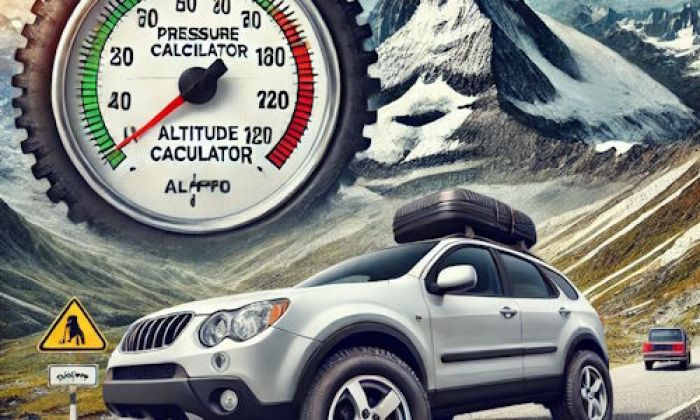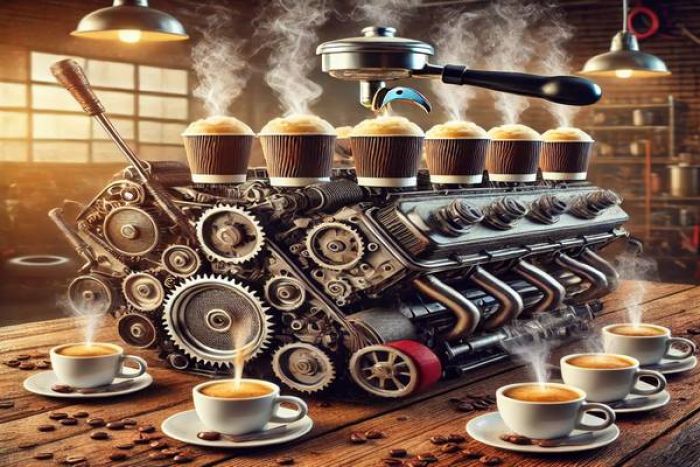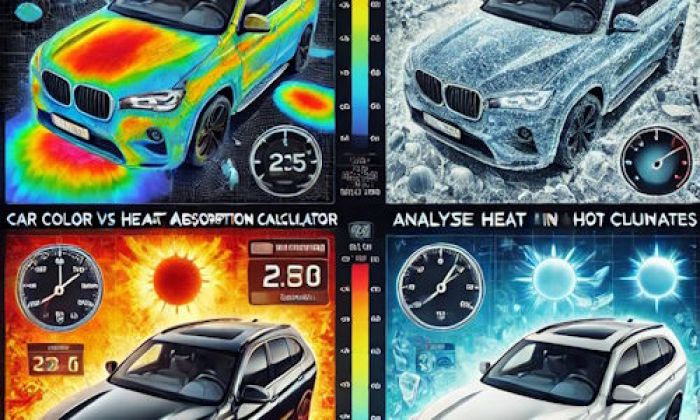Toyota engines are world renowned for their longevity, but have you ever wondered which of these powerplants rank at the top of the pile? Today, CARARC will pit two of the best Toyota engines - the 3L and the 5L against each other to find out the true king of reliability.
The L family of Toyota engines has a history that dates back to 1977. All L-engines are diesel-powered and had several variants throughout the years. Out of them, the 3L and 5L are two of the most popular models.

Key features and my opinion about the 3L engine
- Production years:1988-2005
- Average lifespan of 3L:260,000-290,000 miles
- Fuel supply type:prechamber
- Power range:78-91 hp
- Fuel efficiency:bad
- Engine block material:cast-iron
- Engine reliability score:high
- The most common problems:noise and vibrations, oil and coolant leaks, belt is OK but the engine is dead if it's broken.
Key features and my opinion about the 5Lengine
- Production years:1994-2005
- Average lifespan of 5L:280,000-310,000 miles
- Fuel supply type:prechamber
- Power range:89-97 hp
- Fuel efficiency:bad
- Engine block material:cast-iron
- Engine reliability score:high
- The most common problems:noise and vibrations, oil and coolant leaks, belt is OK but the engine is dead if it's broken.
Toyota L series
To say Toyota struck a goldmine when it created the first L engine in 1977 would be an understatement. The simple design, paired with the cost-effectiveness of diesel power made the original L engine became an instant sales success for the Japanese manufacturer.
The first engine of this lineup, simply called the "L" was a 2.2-liter naturally aspirated powerplant that made 72 horsepower and 142 Nm of torque. Later engines improved upon this formula, with engine capacities ranging from 2.2 - 3.0 liters and providing up to 99 horsepower on tap.
Toyota made 12 engines under the L family through the years, and some are still in production to this day.
- L
- 2L
- 2l-II
- 2L-T
- 2L-T(II)
- 2L-TE
- 2L-TE(II)
- 2L-THE
- 2L-THE(II)
- 3L
- 5L
- 5L-E
Now that you have an understanding of this beloved engine lineup, let us take a closer look at the Toyota 3L engine.
Toyota 3L overview
The Toyota 3L diesel engine entered production in 1988 and carried on until 1997. Similar to the rest of the L-series lineup, the 3L also had four cylinders. Total displacement stood at 2.8 liters (2779 cc) which was good enough for 90 horsepower and 188 Nm of torque.
Some Toyota models powered by the 3L powerplant include,
- Hiace (4th generation)
- Dyna 150 (5th generation)
- QuickDelivery 100
- Hilux pickup (5th and 6th generations)
- Land Cruiser Prado (LJ95)
- Hilux Surf/4Runner (2nd Generation)
The 3L had a Variable-Valve Timing (VVT) which improved both fuel efficiency and performance characteristics by controlling how long the intake and exhaust valves stay open. Like all modern engines, the 3L was liquid-cooled and also had a jet pump distribution style fuel pump produced by Bosch.
Although the 3L is generally considered to be a reliable powerplant, there are some mechanical gremlins that owners should be aware of. Similar to other diesel engines, the 3L produced a lot of noise and vibrations which can be quite unpleasant on longer drives.
This engine doesn't come with hydraulic compensators. As a result, the valve clearances have to be manually adjusted. We have also heard complaints about the cooling system pump.
If the timing belt of the Toyota 3L breaks, you are looking at a hefty repair bill. In addition to replacing the belt, you'll have to also replace the cylinder head and camshaft.
Toyota 5L overview
The 5L engine succeeded the 3L and was the weapon of choice for many diesel-powered Toyotas in the 2000s. Some models powered by the 5L include,
- Toyoace (7th generation)
- Hilux (6th generation)
- Condor Panel Van (4th generation)
- Crown Comfort (LSX12)
- Quick Delivery 100 (2nd generation)
- Urban Transporter (3rd generation)
- Hiace (4th generation)
Just like the 3L, this engine was also a diesel inline-four-cylinder. However, engine capacity took a hike up to 3.0 liters (2985 cc) yet the power figures remained quite similar between the two powerplants.
Lubricant leaks, water pump issues, and excessive vibrations are some common complaints associated with this Toyota diesel engine.
Toyota 3L vs 5L
Both the 3L and 5L engines might seem quite similar on the outside, but there are a few slight differences that set them apart.
1) Performance
The performance characteristics of these two powerplants vary slightly mainly due to the difference in engine capacity. As we already mentioned, the 3L is a 2.8-liter engine, while the 5L comes with 3.0 liters of displacement to play with.
This allowed the 5L to produce marginally more power than its older counterpart. "How much?" you may mask. While the 3L maxed out at 90 horsepower, the most powerful version of the 5L produced 5 horsepower more.
The story remains the same when it comes to torque as well. The 5L engine had the capability of producing 197 Nm of torque, while the 3L could only put out 188 Nm of pulling power.
2) Forced-induction
With both engines producing less than 100 horsepower out of the factory, you might consider going down the forced induction avenue. It is generally considered that the 3L is more suitable for turbocharging than its more recent counterpart.
3) Fuel consumption
Being the bigger engine of the two, the 5L consumes more fuel than the smaller 3L engine. Keep this in mind if you want to extract the maximum miles per gallon.
Other popular Toyota diesel engines
The L-series isn't the only lineup of diesel engines produced by Toyota. Throughout its 85-year history, the Japanese automotive giant has made some remarkable diesel powerplants.
1) 1KZ-TE
The 1KZ-TE was a turbocharged diesel four-cylinder engine by Toyota, which first hit showroom floors in 1993. This 3.0-liter engine produced 129 horsepower along with 343 Nm of torque and redlined at 4400 RPM. Some popular models equipped with the 1KZ-TE include the 6th gen Hilux pickup truck and the 90-series Land Cruiser Prado SUV.
The inclusion of a drive-by-wire system for throttle control, cylinder heads made of aluminum, and indirect fuel injection were some distinctive features of the 1KZ-TE. Furthermore, the plateau-honed cylinder bores allowed the piston rings to seal more efficiently than other engines at the time.
2) 2KD-FTV
This turbocharged, DOHC engine is a part of Toyota's "KD" line of diesel engines. The 2.5-liter 2KD-FTV had two variants - the standard and the "High Version"
Although the power figures of both engines were identical at 100 bhp, the "High Version" had the upper hand in torque. Where the standard 2KD-FTV maxed out at 200 Nm, the upgraded variant's peak torque output was set at 260 Nm. In addition, the "High Version" came with an intercooler and tumble control valves.
A reinforcing rib on the cast iron engine block helped to reduce engine vibrations, as did the torsional rubber damper on the crankshaft pulley. Elsewhere, the mechanically operated wastegate valve and actuator allowed the turbocharger to limit boost pressure which prolonged its service life.
3) 1HZ
Unlike the two previous engines we discussed, the 1HZ lacks a turbocharger which gives it a boost in power. However, that hasn't prevented this engine from finding its way under the hood of the almighty Toyota Land Cruiser.
This massive 4.2-liter inline-six engine produced a respectable 129 horsepower and 285 Nm of torque. These figures were enough to power the massively successful 80-series Land Cruiser. Additionally, the cast iron construction helped to enhance the already bulletproof Toyota reliability.
In fact, there are some 1HZ owners who have surpassed the million-kilometer mark only on basic maintenance.
4) 1KD-FTV
We already looked at the 2.5-liter entry into the KD series. Now, it is time to take a look at the bigger 3.0-liter variant - the 1KD-FTV.
This engine comes equipped with Toyota's patented Direct Injection 4-Stroke Common Rail Diesel Engine technology, more commonly known as D4-D. Not only that, but it also has a variable nozzle turbocharger which distinguished it from the 2KD-FTV we discussed earlier.
The 1KD-FTV is no slouch when it came to performance as well. Maximum power stood at 134 hp, while torque figures peaked out at 420 Nm. Some popular Toyota models powered by the 1KD-FTV include the Land Cruiser Prado (J90), Hilux Surf (3rd generation), Fortuner, and the Hiace (5th generation).
5) 3C-TE
The final engine we'll be taking a look at today belongs to Toyota's C-series of inline-4-cylinder diesel engines which was in production from 1998 to 2004.
The 3C-TE had a cast-iron block, an aluminum cylinder head, a Single Overhead Cam (SOHC) design, and Electronic Fuel Injection (EFI). Producing 99 horsepower and 226 Nm of torque, this engine was a popular choice for several passenger vehicles of the era.
Final Thoughts
Toyota has a healthy reputation for producing some of the most reliable engines in the game, and it remains the same for both the 3L and 5L powerplants. While the 3L was the more efficient engine of the two, it couldn't match the 5L in raw performance. Keep these differences in mind when you are choosing between the two.
About the authors
The CarAraC research team is composed of seasoned auto mechanics and automotive industry professionals, including individuals with advanced degrees and certifications in their field. Our team members boast prestigious credentials, reflecting their extensive knowledge and skills. These qualifications include: IMI: Institute of the Motor Industry, ASE-Certified Master Automobile Technicians; Coventry University, Graduate of MA in Automotive Journalism; Politecnico di Torino, Italy, MS Automotive Engineering; Ss. Cyril and Methodius University in Skopje, Mechanical University in Skopje; TOC Automotive College; DHA Suffa University, Department of Mechanical Engineering






Add comment